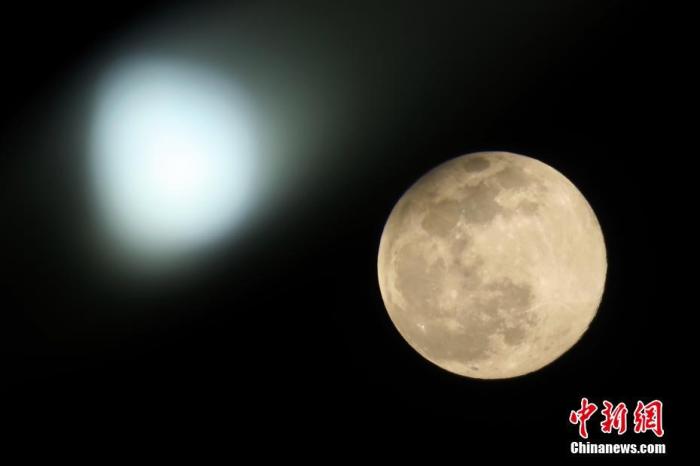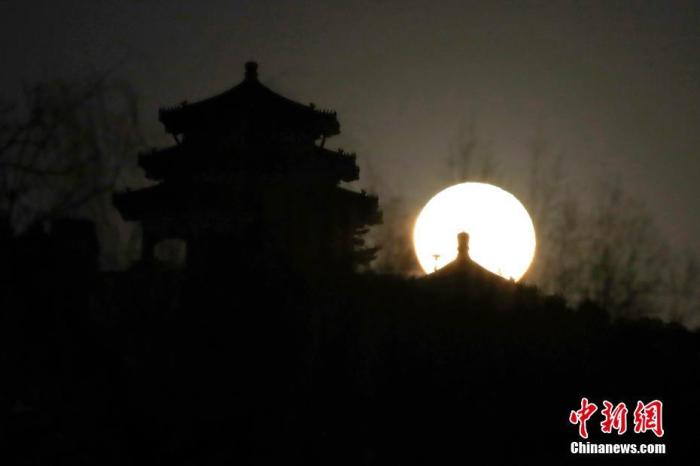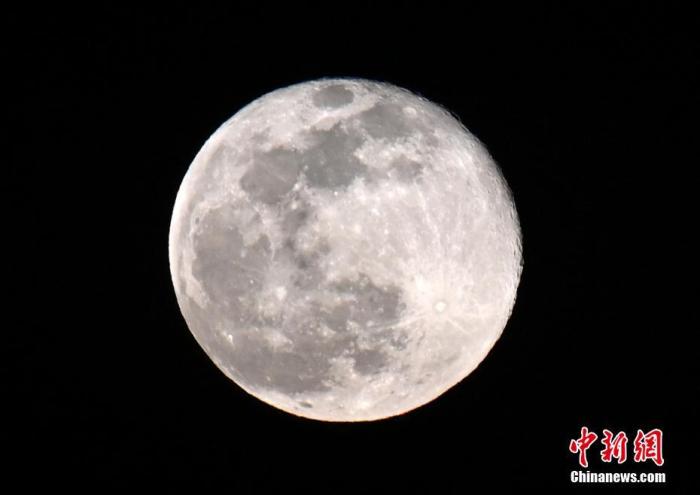The topic of "super moon" has been searched frequently: how to form it? How to observe?
Beijing, March 12 (Reporter Shangguan Yun) A bright moon often entrusts people with good wishes and thoughts. Recently, topics related to the "Super Moon" have been on the hot search for many times, and astronomy enthusiasts have chosen the right time and place to observe and feast their eyes.
In fact, the "super moon" is an astronomical phenomenon that everyone has paid more attention to in recent years. So, what is a "super moon"? When does it usually appear? How can people observe?
Conditions for the formation of "super moon"
To form a "super moon", two basic conditions need to be met, one is "nearest" and the other is "roundest".

Data Map: On March 9, the night of February 16, the Lunar Year of the Rat, Beijing, before the arrival of the "Super Moon", a full moon rose, reflecting the street lights in the community. China News Service reporter Sun Zifa photo
"The orbit of the moon around the earth is elliptical, with the closest perigee and the farthest apogee." Yuan Fengfang, director of popular science at Xinglong Observation Base of National Astronomical Observatory of Chinese Academy of Sciences, explained.
She said that "super moon" means that the moon is at the perigee when it is at the full moon. At this time, when the moon comes to perigee, it looks bigger than usual because it is close to the earth.
"February 19, 2019 is the Lantern Festival in China, which happens to be ‘ Super moon ’ 。” Yuan Fengfang said, "The super full moon meets with our traditional festivals, which is more ornamental and attracts public attention."
How to watch "Super Moon"?
To watch the super moon, strictly speaking, you can choose to observe it when the moon-earth-sun is closest to a straight line in sequence. To put it simply, on the night when the "super moon" appeared, it can be observed anywhere as long as it is sunny or in partly cloudy.

Data Map: On the evening of March 10th, "Super Moon" appeared in Beijing. China News Service reporter Futian photo
Yuan Fengfang introduced a set of data. At 10: 35 am on April 8, Beijing time, the moon, the earth and the sun were almost in a straight line, and the moon was the most round at this time; At 2: 08 am on April 8, Beijing time, the moon reached perigee.
She said that it is suitable for observation from the evening of April 7 to the morning of the 8 th. You can shoot a moon at 2: 08 am on April 8 and before sunrise.
"In fact, we can appreciate it with our eyes ‘ Super moon ’ You can also use ordinary binoculars or monoculars, or even SLR and telephoto lenses. " Yuan Fengfang explained that "super moon" is a very common astronomical phenomenon. "We can see the full moon every month, can’t we?"
Appear no more than 4 times a year.
Earlier, some media reported that astronomical experts said that the "super moon" mostly happened on the 15th and 16th lunar months, and it will be staged four times in the Year of the Rat in the lunar calendar, and the time will be on February 9th, March 10th, April 8th and May 7th respectively.
“‘ Super moon ’ In fact, it is only a very common phenomenon. The period between the moon’s arrival at perigee takes 27.55 days, and the period between two full moons is the full moon, which takes 29.27-29.83 days. " Yuan Fengfang said.
There is a small time difference between the above two periods. Yuan Fengfang said that it is precisely because of the difference in the length of the cycle that there are no more than four "super moons" every year.

Data Map: "Super Moon" appeared in Beijing. China News Service reporter Mao Jianjun photo
Interestingly, Yuan Fengfang mentioned that the perigee of the moon on April 8 was about 500 kilometers closer to the earth than the perigee on March 10. Therefore, the "super moon" on April 8 will be a little bigger (about 0.1%), but it is difficult for the naked eye to see the difference in size.
Interesting "Minimum Moon"
It is worth noting that there are not only "Super Moon" but also "Minimum Moon", and some netizens jokingly call it "Super Little Moon".
The so-called "minimum moon", that is to say, when the moon is full moon, it just runs near the apogee.
"The only time in 2020 ‘ The smallest moon ’ , on October 31. " Yuan Fengfang suggested that interested people can take pictures of the "Super Moon" and the "Minimum Moon" in the same place and use the same set of shooting equipment, and then make a comparison. This is an astronomical observation that the general public can do. (End)